10 groundbreaking archaeological discoveries in Türkiye for October 2024
 An aerial view of the archaeological excavations at the 12,000-year-old Cayonu Hill in the Ergani district of Diyarbakir, Türkiye, October 19, 2024. (AA Photo)
An aerial view of the archaeological excavations at the 12,000-year-old Cayonu Hill in the Ergani district of Diyarbakir, Türkiye, October 19, 2024. (AA Photo)
Anatolia, a historic crossroads of civilizations, has once again captured the attention of historians and archaeologists with its latest archaeological revelations. From the Hittites to the Romans, this rich region has long been a canvas of human achievement and cultural exchange.
As we leave October 2024, Türkiye’s archaeological landscape has unveiled remarkable insights that deepen our understanding of its ancient heritage.
These discoveries not only enhance our understanding of Türkiye’s ancient history but also reaffirm its position as a treasure trove of archaeological significance.
As we continue to explore this captivating region, each find brings us closer to unraveling the rich narrative of human civilization.
Here are top 10 archaeological discoveries in Türkiye in October 2024
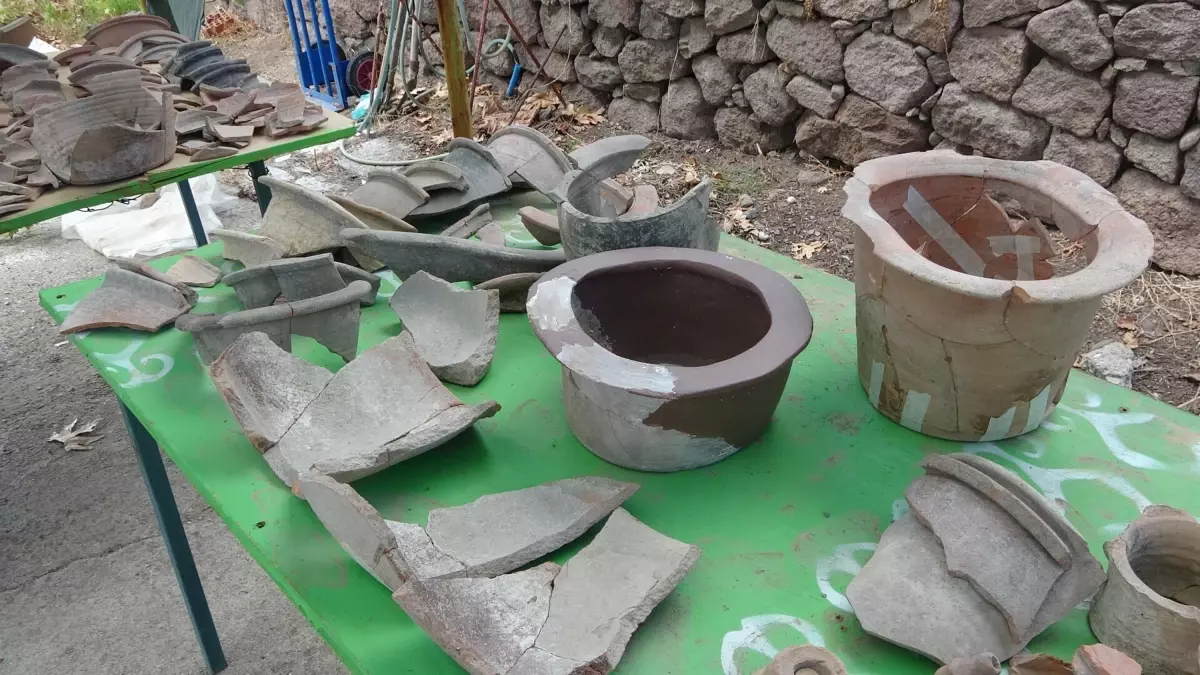
1- Intriguing discovery in Türkiye’s Canakkale: 1,700-year-old chamber pots unearthed
Excavations at the ancient Assos Archaeological Site in Canakkale, Türkiye, have revealed ceramic chamber pots dating back 1,700 years.
Conducted by a team of 25 archaeologists led by Professor Nurettin Arslan from Canakkale Onsekiz Mart University, this significant find sheds light on daily life during the Late Roman era.
The chamber pots were discovered in a refuse area east of the Agora, known as the Nymphaeum, which served as a dumping ground for broken household items. Professor Arslan emphasized that these refuse heaps provide invaluable information about domestic life, allowing researchers to piece together the city’s history through the artifacts unearthed.
Notably, many of the chamber pots were found nearly intact, with some able to be restored to their original state. The ceramics date back to the second to fourth century A.D., offering a glimpse into the material culture and domestic practices of the time.
This discovery not only enhances the understanding of Assos’ history but also contributes to the broader knowledge of ancient Roman domestic life in Türkiye.

2- Archaeologists uncover 2,400-year-old theater at Alexandria Troas in Canakkale
Turkish archaeologists are set to unveil a significant 2,400-year-old theater in the ancient city of Alexandria Troas, located near Dalyan, Canakkale. The theater, estimated to seat between 10,000 to 12,000 people, has remained largely buried and is part of ongoing excavations that began on July 1, 2024, led by professor Erhan Oztepe from Ankara University.
The theater’s strategic hillside design follows traditional Greek architectural principles, likely dating back to the city’s early days, with potential renovations under Roman Emperor Hadrian.
Inscriptions discovered at the site provide insights into its cultural significance, including the recognition of a musician from Lesbos.
This excavation is part of a larger project to reveal the ancient city’s cultural landscape, contributing to the rich historical tapestry of the region, which includes nearby sites like Troy. As excavations progress, archaeologists hope to uncover more original structures, enhancing the understanding of Alexandria Troas’ history.
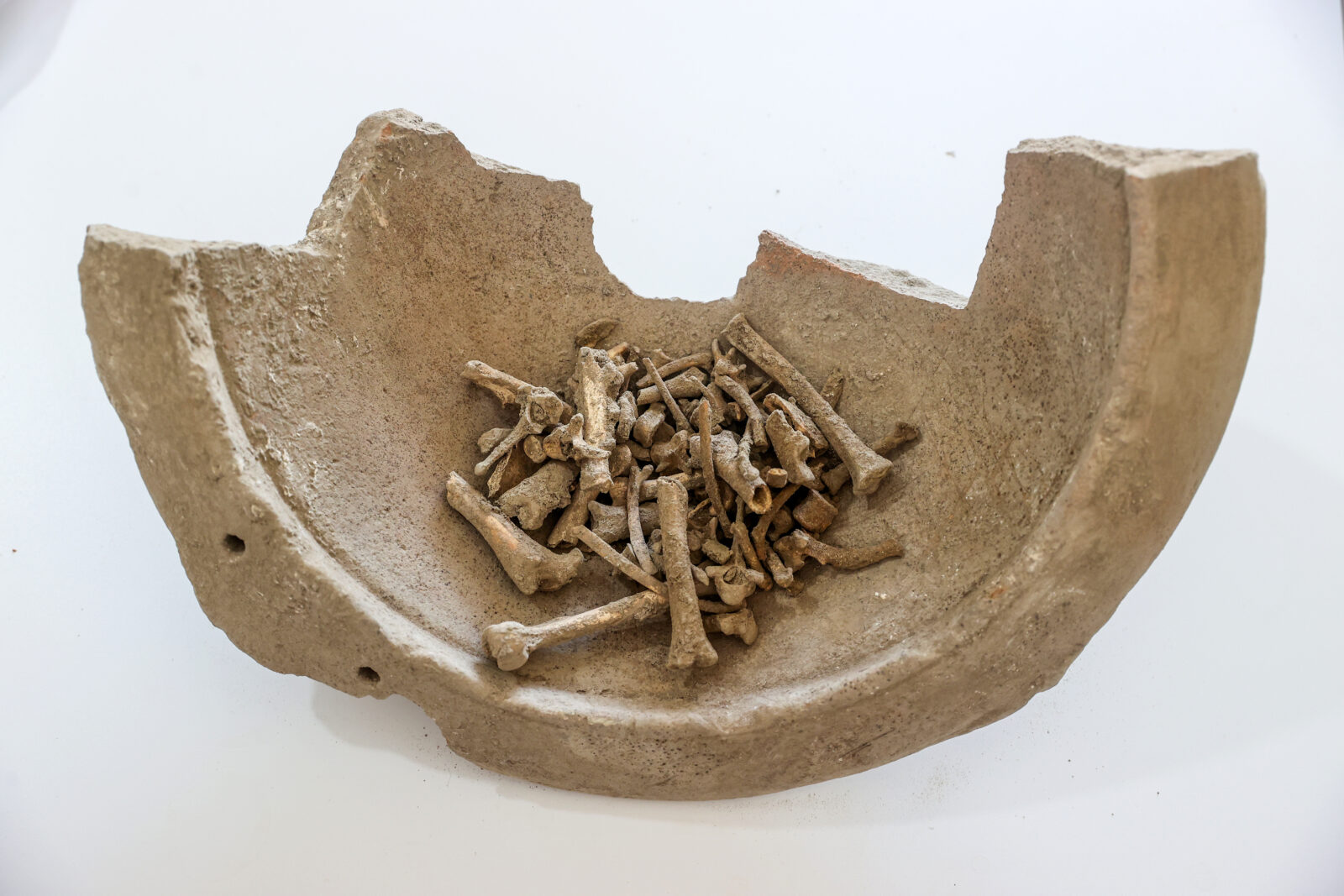
3- Ancient burial sites in Türkiye’s Savatra reveal mysterious infant skeletons in clay pots
Excavations in the ancient city of Savatra, located in Konya, Türkiye, have revealed infant skeletons buried inside clay pots. These findings are being studied to shed light on the burial rituals and daily life during the Early Roman Empire and Late Antiquity.
Led by associate professor Ilker Isik from Selcuk University, the excavation has been ongoing since 2021 in the Karatay district’s Yaglibayat neighborhood. Among the most intriguing discoveries are two clay pots containing headless infant skeletons, found near ritualistic burial sites south of the Roman-era theatre. The pots were adorned with dog skulls, a unique practice in both Anatolia and globally.
Isik noted that this rare burial type is likely tied to religious rituals. Scientific studies, including geo-radar scans by professor Kemal Gokay, have uncovered another burial site nearby, containing more infant and animal skeletons, including those of foxes, cattle, horses and donkeys, suggesting significant animal roles in these rituals.
The findings, dating back 1,500 to 1,600 years, may push the historical timeline further. Besides the infant burials, archaeologists are excavating a burial mound and the foundations of a church, hoping to unveil more secrets of Savatra and its ancient customs.
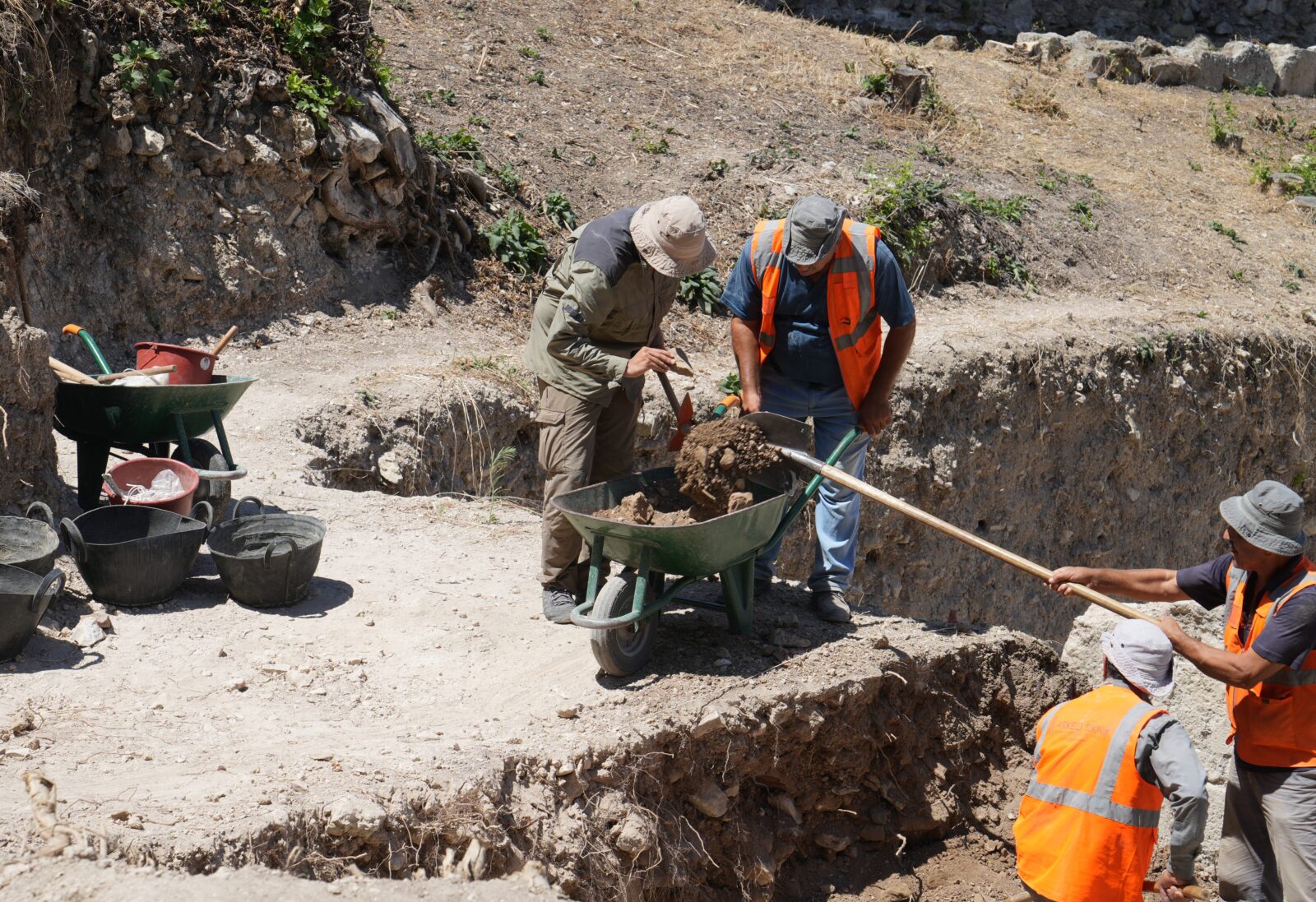
4- Thrace’s oldest known winery unearthed in Türkiye’s Bathonea
Archaeologists have discovered the oldest known wine production facility in Thrace, located in the ancient city of Bathonea, near Kucukcekmece Lake in Istanbul, Türkiye. Excavations that began in 2007 have revealed significant findings, including a facility dating back to the ninth and 11th centuries A.D., equipped with a marble basin, grape-crushing area, filtration pits, and amphora fragments. The wine produced at this site was traded across various regions, including the Aegean and Mediterranean.
Since 2022, excavations have been supported by Mercedes-Benz Turk, with notable contributions from professor Sengul Aydingun and site archaeologist Ayberk Enez. Despite the ongoing threats from urban development, Bathonea remains a crucial archaeological site, showcasing two ancient harbors and a submerged lighthouse.
Significant discoveries from past excavations (2011-2012) include harbor structures, a vast cistern, and remnants of a fortress built by Emperor Constantine the Great. Bathonea has been recognized among the world’s top archaeological discoveries, with its findings suggesting a rich history of trade and cultural exchange in the region.
The site transitioned from a religious center to a production hub for wine and olive oil, later becoming a medical facility. Artifacts uncovered indicate a vast maritime trade network that extended from the western Mediterranean to the Black Sea.
The ongoing excavations are helping to fill gaps in Istanbul’s historical timeline, revealing evidence that predates the previously believed founding date of 667 B.C. Researchers aim to explore the mysterious periods of ancient Istanbul’s history, providing deeper insights into its role as a cultural and trade center.
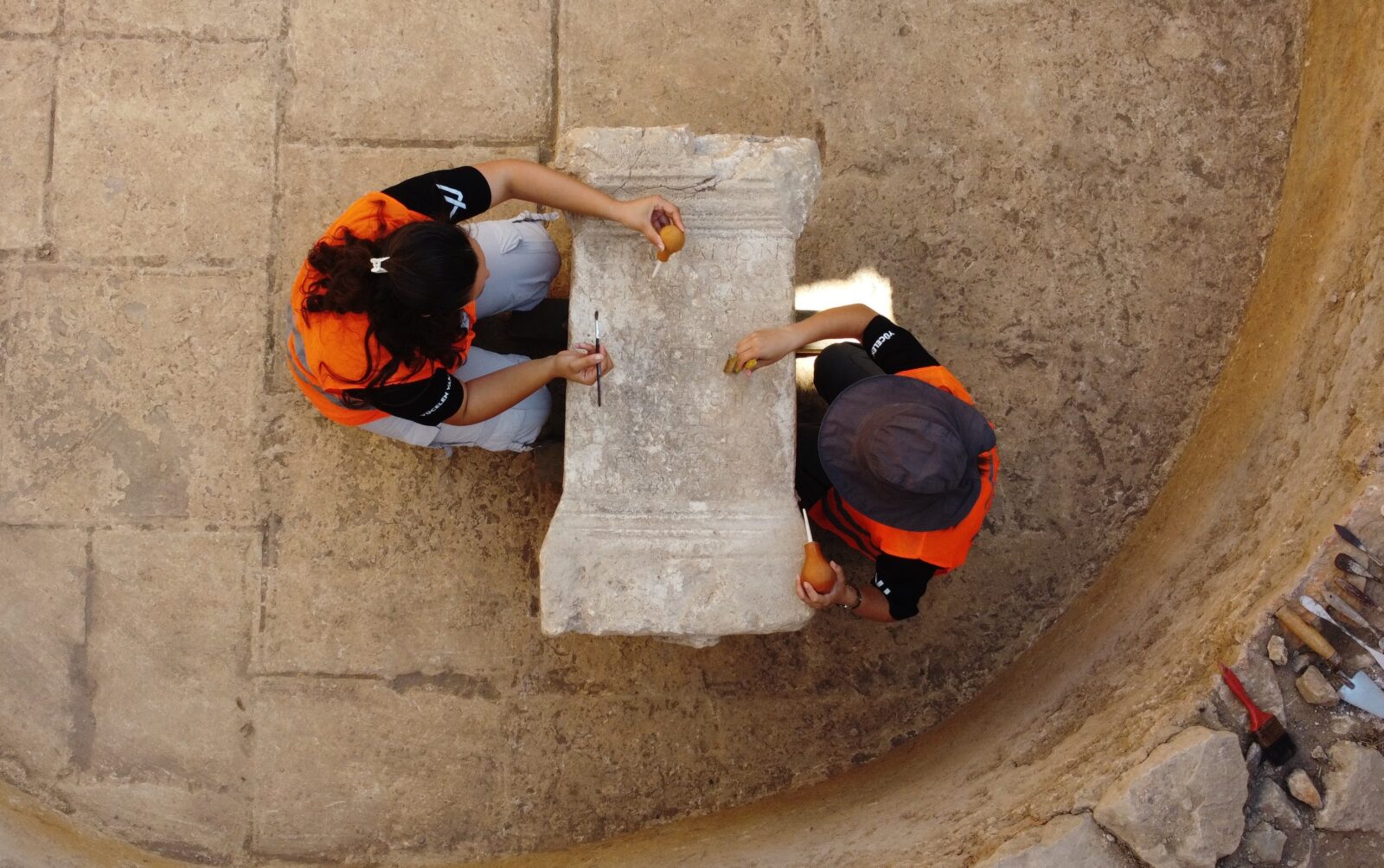
5- Ancient athletic legacy uncovered: 2,000-year-old inscription found in Anemurium, Türkiye
Excavation teams in Anemurium, an ancient city in Mersin, Türkiye, have uncovered a remarkable 2,000-year-old inscription dedicated to a wrestler named Kaikilianos. The inscription, consisting of 13 lines, was found in the Port Bath during ongoing excavations and measures 120 centimeters high and 50 centimeters wide.
Mersin Governor Ali Hamza Pehlivan expressed excitement over this significant artifact, emphasizing its role in illuminating human history. Professor Mehmet Tekocak, leading the excavation team from Selcuk University, highlighted the inscription’s unique insights into ancient athletic culture and competition, indicating that Anemurium was an important center for nurturing athletes and hosting significant sports events.
Anemurium, spanning about 600 acres on the Mediterranean coast, has historical roots dating back to the first century B.C. Previous discoveries at the site, such as a Roman statue, have underscored its rich cultural heritage. Governor Pehlivan noted that these findings are vital for the nomination of Anemurium as a UNESCO World Heritage Site.
As excavations continue, the archaeological team is hopeful for more discoveries that will enhance our understanding of the city’s role in sports and culture.
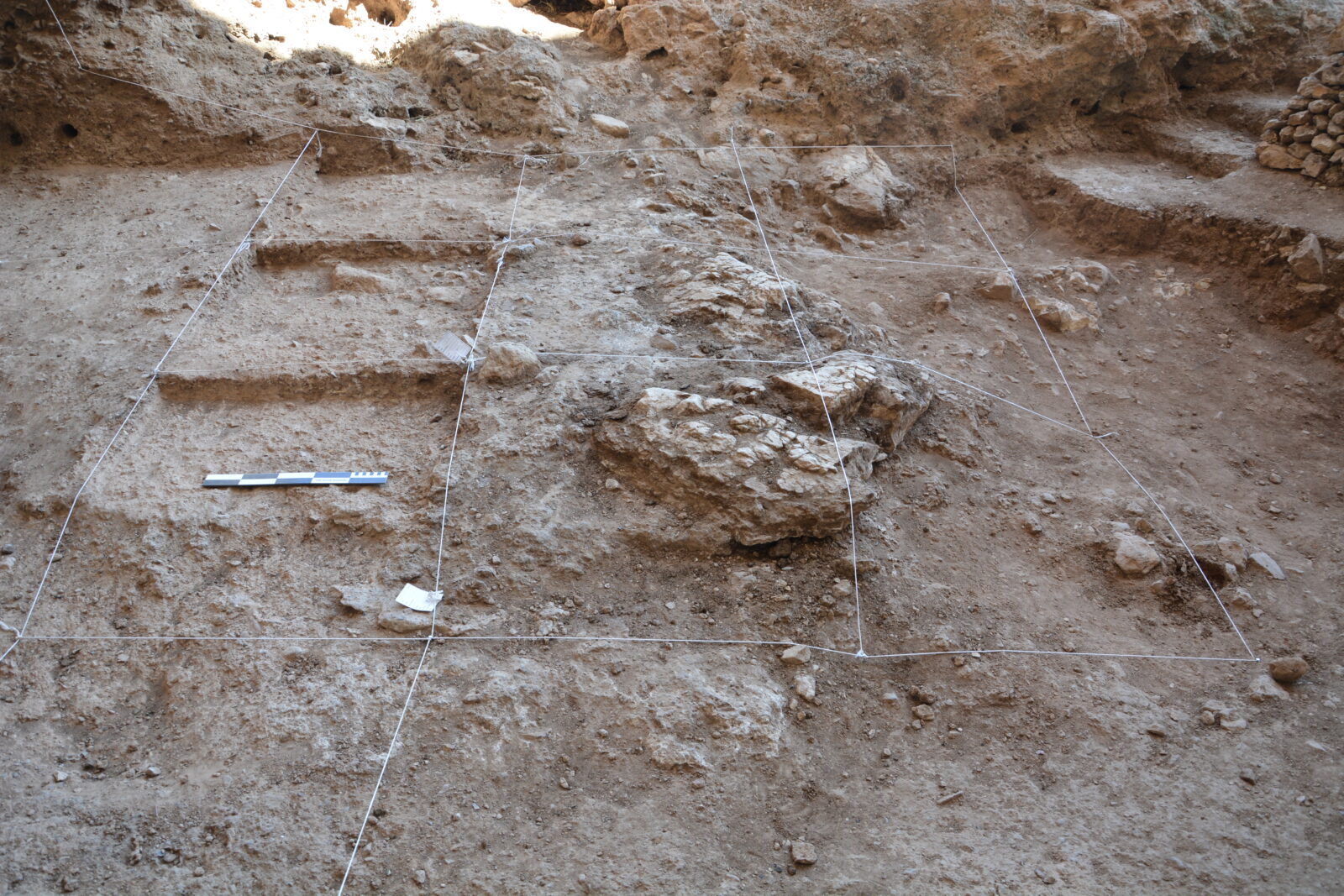
6- Archaeologists discover 450,000-year-old artifacts in Türkiye’s Mardin
Archaeologists have discovered artifacts dating back 450,000 years at Ulukoy Cave in the Gurs Valley of Kiziltepe, Mardin. The excavation led by Mardin Artuklu University significantly enhances our understanding of early human life in the region.
The cave, which measures 23 meters long and 16 meters deep, initially indicated signs of habitation from the Paleolithic Age. However, deeper excavations revealed layers suggesting human activity as far back as 450,000 to 500,000 years ago.
Among the significant findings were stone tools and bones that shed light on the diet and lifestyle of early inhabitants. Notably, Yabrudian stone tools, typically found in the Levant-Syria region, were uncovered alongside Acheulean artifacts, indicating cultural connections between Southeast Anatolia and Africa.
Additionally, evidence of the Hummal industry, previously found only in Syria, marks its first discovery in Anatolia. This adds to the region’s archaeological significance, as Ulukoy Cave is the first site in Northern Mesopotamia to undergo dedicated Paleolithic excavation.
The ongoing research promises to provide deeper insights into this ancient site, with plans for future excavations to explore the findings further.
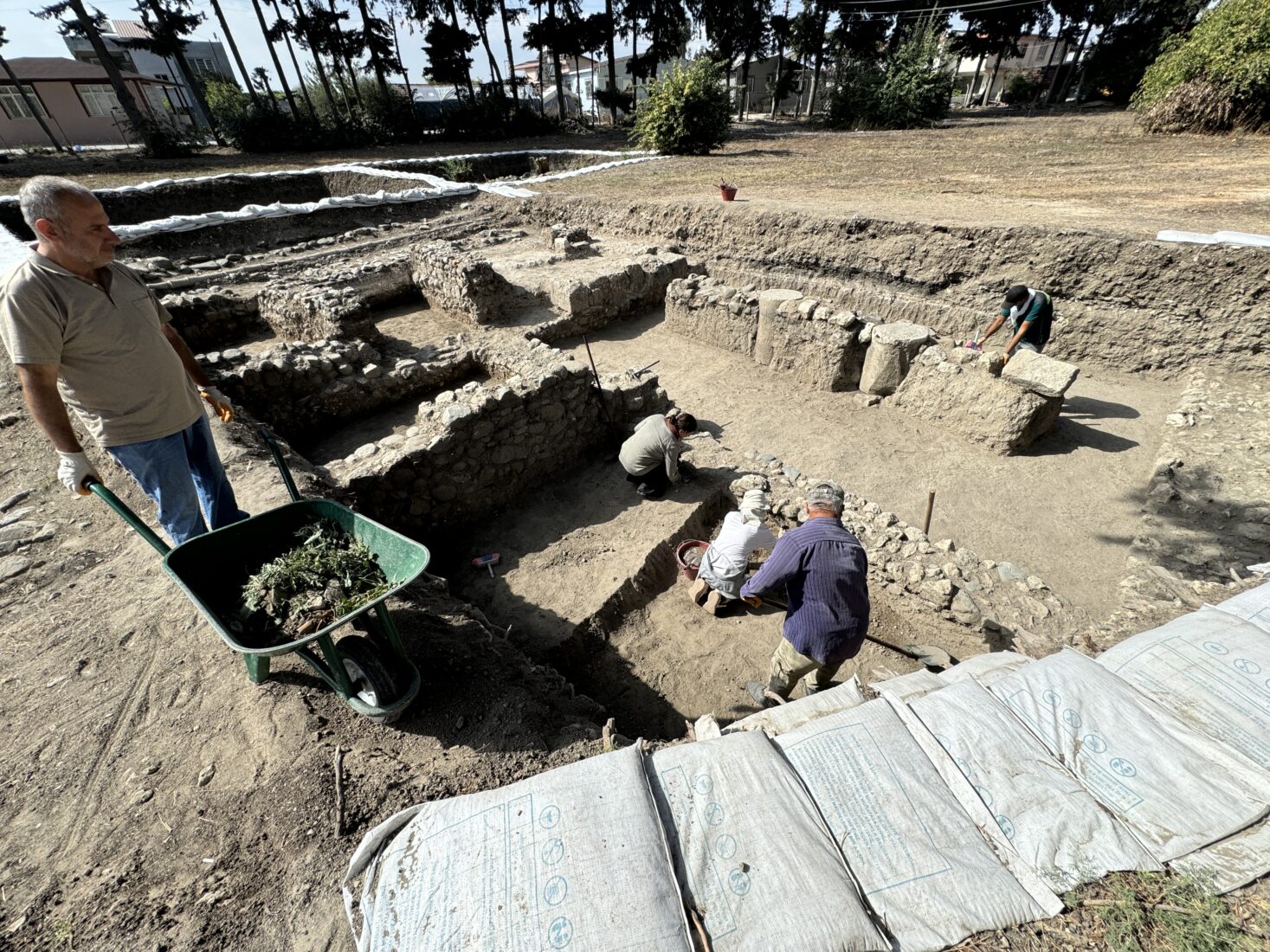
7- Traces of ancient earthquakes found around Antakya’s Roman hippodrome
Recent archaeological excavations at Antakya’s ancient Roman hippodrome have uncovered evidence of past earthquakes, led by a 20-member team from Hatay Mustafa Kemal University. The team, headed by Professor Hatice Pamir, is exploring the Kucukdalyan neighborhood, examining Roman and Hellenistic structures, including a nearby palace destroyed and rebuilt after seismic events.
The team’s findings indicate that the palace dates back to the fourth century A.D. and reflects Antakya’s vulnerability to earthquakes. They discovered that architectural elements like columns and stone blocks were reused during the palace’s reconstruction, providing important clues for future research.
Additionally, excavations at the hippodrome revealed a structural element dividing the racetrack, dating back to 115 A.D., as well as evidence of a siphon system and decorative mosaics that enhance the understanding of the site’s design.
Plans are underway to create an archaeopark to showcase the region’s archaeological heritage once excavations are completed. The Museum Hotel Antakya features ancient mosaics that reflect the area’s seismic history, highlighting the resilience of its structures.
As research continues, the archaeological team is piecing together the rich and complex history of Antakya, shaped significantly by seismic events.

8- 3,000-year-old settlement discovered at Türkiye’s Ataturk Dam Reservoir
An archaeological study along the shores of the Ataturk Dam Reservoir in Kahta, Adiyaman, has uncovered a 3,000-year-old settlement. The excavation, led by the Adiyaman Museum Directorate, revealed 10 ancient settlement areas during a project aimed at identifying historical sites in the region.
Museum Director Mehmet Alkan noted the findings resulted from thorough fieldwork initiated after the reservoir’s water levels receded. The discovered artifacts, including pottery fragments and rock-carved structures, suggest the area was once a vibrant community.
This significant finding not only enriches the understanding of ancient habitation patterns but also underscores the importance of continued archaeological explorations in submerged regions.

9- Ancient sculpture unveiled in Türkiye’s Garibin Tepe reveals Urartu art mysteries
Archaeologists have discovered a monumental one-ton basalt statue from the Urartian period during excavations at Garibin Tepe in the Tusba district of Van, Türkiye. Measuring approximately 2 meters in length and 1 meter in width, this statue, believed to have a broken neck, is the first of its kind in the area and is currently being restored at the Van Museum.
Conducted under the Ministry of Culture and Tourism‘s Van Museum in collaboration led supervision, the excavation with Professor Mehmet Isikli from Ataturk University. Professor Isikli emphasized the significance of this find, as there are very few known sculptural artifacts from the Urartian civilization, making this statue a striking example of their artistry.
The statue’s unique characteristics and craftsmanship are set to provide valuable insights into Urartian plastic arts, with further research anticipated to clarify its meaning and design.
The excitement surrounding Garibin Tepe is palpable, as it holds the potential for more unique discoveries that could deepen the understanding of Urartian culture.
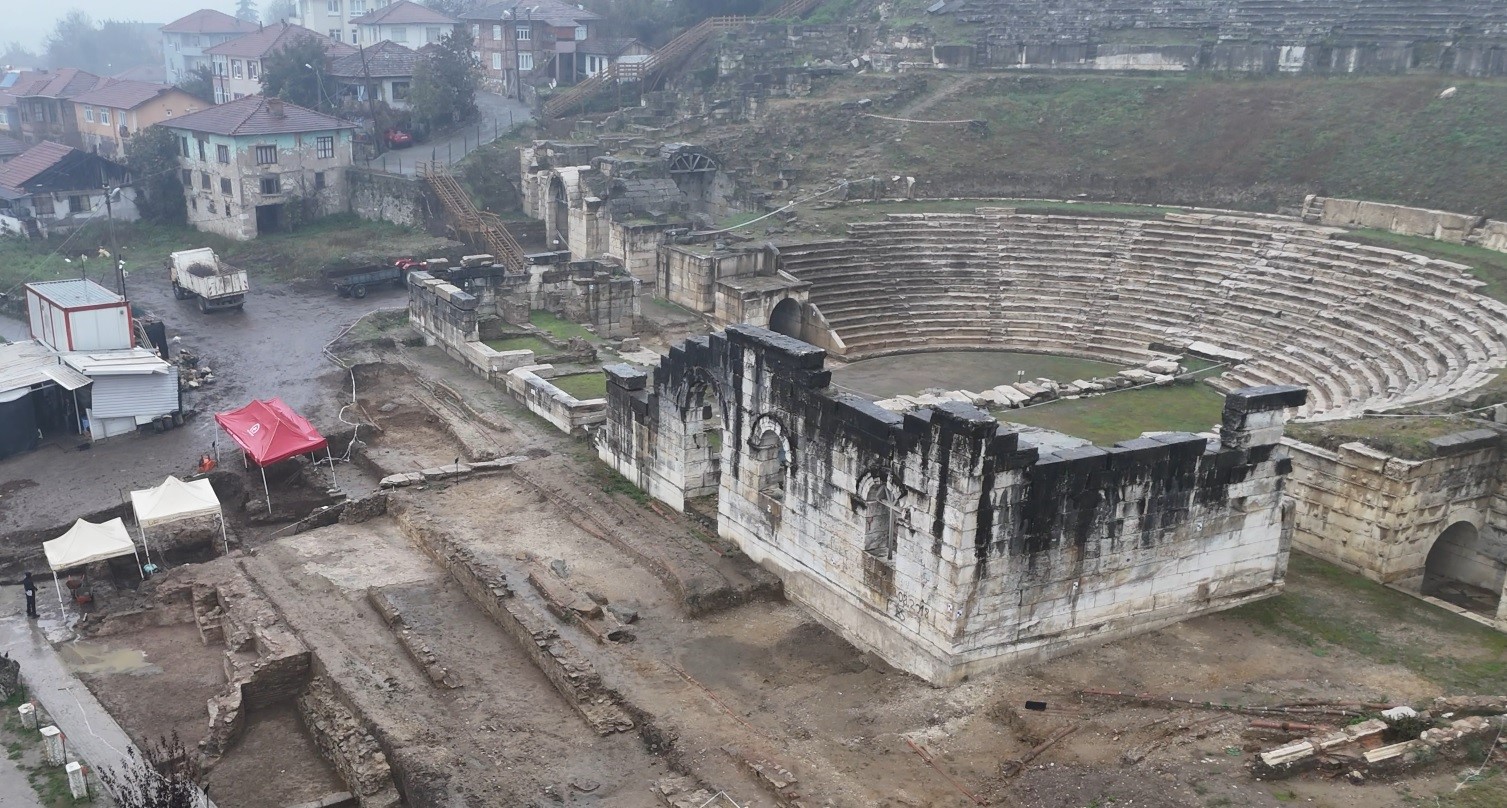
10- Ancient infrastructure and Byzantine church unearthed in Türkiye’s Prusias ad Hypium
Excavations at the ancient theater of Prusias ad Hypium in Duzce, Türkiye, have revealed significant archaeological findings, including an intricate infrastructure system and a Byzantine-era church. Supported by the Ministry of Culture and Tourism and Duzce Municipality, these discoveries enhance the site’s historical significance.
A network of terracotta pipes indicating a sophisticated water distribution system was uncovered. Ihsan Aslan, Director of the Konuralp Museum, stated that the pipes were designed for both public and residential buildings, dating back to the fourth century A.D. when the theater ceased operations.
The excavations also revealed a Byzantine church with an apsidal design. Some damage was noted in the southern section, and archaeologists are currently focusing on its entrance hall.
An ancient water channel known as “Kilise Water” (Church Water) was traced from the theater to a nearby fountain. Plans are underway to restore this water source and reconnect it to the modern fountain, highlighting Türkiye’s rich historical legacy.
October 2024 has proven to be a remarkable month for archaeological discoveries in Türkiye.
From ancient burial practices to significant artifacts revealing daily life, these findings not only contribute to our understanding of the past but also highlight Türkiye’s crucial role as a center of historical significance.



